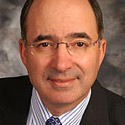03:58 PM
Four Ways President Obama Can Put the Economy Back on Track
EDITOR'S NOTE: This article is written by Larry Tabb, Special Contributing Editor for Wall Street & Technology and Founder & CEO of TABB Group.
As of 12:00 noon ET on January 20th, the President Barack Obama and his Administration walked into one of the most turbulent financial markets since the Great Depression. Financial asset quality is in a steep decline, individuals are defaulting rapidly on debt, credit remains further constricted, corporations cannot borrow, banks are failing and the global economy is hemorrhaging.
How can President Obama begin to put the U.S. economy back on track?
First, straighten out the banking system. While the first tranche of the TARP money was supposed to be used to buy up troubled assets, it was used instead to shore up bank capital. While this wasn't a mistake, it needed to be done in tandem with either buying up the troubled assets or somehow getting the troubled assets off banks' balance sheets. Without getting the troubled assets off their books, these assets will weigh like an anchor on the solvency of these banks. As both the economy and toxic-asset values continue to decline, the toxic assets, like weeds, will draw capital from the good side of the bank until the garden is choked out. Capitalization without asset quarantine is what happened with the first tranche of the TARP funds and that money has all but vanished with little to show for it.
The new administration's first task must be to both get these assets off the balance sheet of the banks, or force the banks to hold these assets at values that are more commensurate with their market value. This does not just include sub-prime assets. Since TARP was passed, it appears that not only sub-prime assets are challenged, but Alt-A and Option ARM mortgages, credit card debt, auto loans and now commercial real-estate, as well as some corporate loans, need to be included in this toxic waste.
Once assets are quarantined, banks will certainly need more capital and as part B of fixing the banking system, these banks will need to be recapitalized again. While I do not know exactly how much capital will need to be invested to do this, it will certainly be more than the $350 billion allocated to the second half of the TARP funds, probably be closer to $1 trillion.
Second, individual mortgage holders need relief. One of the major issues holding down the economy is the decline of real-estate assets. Since banks' capital is precarious, if credit is frozen, no one can buy large ticket items, including houses and cars. And since no one is buying houses and cars, asset values are declining and individuals and companies are walking away from loans and going bankrupt. As this occurs, banks need to write asset values down and it becomes a death spiral.
We need to find a way to reverse this spiral. The easiest solution is to find a way to provide home-owners with some level of support. While I know this is anathema to most of the country (including me), something needs to be done to help bail out homeowners. This level of support should probably not just be a) passing out checks to millions of homeowners and b) the wholesale readjustment of existing mortgage agreements. Both ideas are bad as the first eliminates the moral hazard of taking on debt you can't afford, and the second changes millions of contracts that have already been negotiated and resold.
Maybe a better idea would be to bundle federal mortgage support into state unemployment insurance and/or bankruptcy support, or provide federally-based second mortgages for individuals at risk of losing their homes. These second mortgages would be managed by the government (not the homeowner) to provide just enough support to cover principal and interest payments above what the homeowner could not afford. Empty homes are not of value to anyone, including the neighborhood, town, state, local enterprises, the bank and certainly not the homeowner.
Larry Tabb is the founder and CEO of TABB Group, the financial markets' research and strategic advisory firm focused exclusively on capital markets. Founded in 2003 and based on the interview-based research methodology of "first-person knowledge" he developed, TABB Group ... View Full Bio























